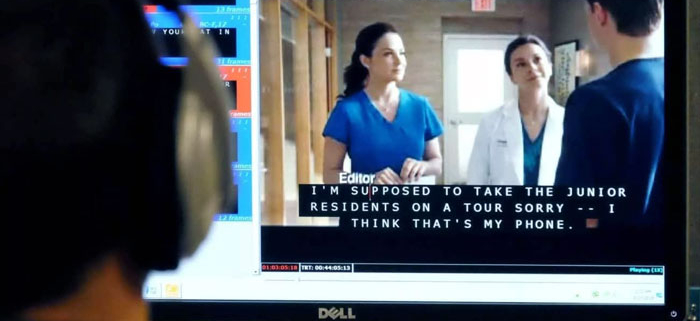A Guide to Offline Captioning for Video Content Producers
In today’s digital world, video content is everywhere, from social media platforms to online educational institutions.
However, not everyone can fully experience video content. For individuals who are Deaf or hard-of-hearing, videos without captions can be frustrating and challenging to understand. That’s where offline captioning comes in.
What is Offline Captioning?
Offline captioning is the process of creating captions for video content after the video has been produced. Captions are synchronized with the video and displayed on the screen as the video plays. Captions are essential for accessibility, as they allow Deaf or hard-of-hearing individuals to understand the spoken content of a video.
Why is Offline Captioning Important?
Offline captioning is crucial for ensuring that video content is accessible to everyone, regardless of their hearing ability.
In fact, there are legal requirements for captioning video content in many countries, including the UK and United States. Failure to comply with these regulations can result in penalties and legal action.
AS well as those with hearing difficulties, captions can also benefit people who may have difficulty understanding what’s being said, such as those who are learning a new language, or if the speaker in the video has a strong accent.
How is Offline Captioning Done?
Offline captioning is a multi-step process that involves creating a transcript of the spoken content in a video, time-stamping the transcript, and then formatting the captions to be displayed on the screen.
Here are the steps involved in offline captioning:
- Transcription: The first step in offline captioning is transcribing the spoken content in the video. This involves listening to the video and exactly typing out the words that are spoken. The transcript should also include sound effects, music, and any other non-verbal audio cues that are important to the understanding of the video.
- Time-Stamping: Once the transcript is complete, the next step is to time-stamp it. Time-stamping involves aligning the transcript with the audio track of the video. Each line of text in the transcript is time-coded to match the specific point in the video where it should be displayed.
- Caption Formatting: After time-stamping, the transcript is formatted to display as captions on the screen. Captions are usually placed at the bottom of the screen and formatted with a black background and white text for easy visibility.
Tips for Video Content Producers
If you’re a video content producer, there are several things you can do to make the offline captioning process smoother and more efficient.
- Plan for captions from the beginning: When creating a video, it’s important to plan for captions from the start. This includes ensuring that the audio is clear and easy to understand, using minimal background noise, and avoiding heavy accents or dialects that may be difficult to understand.
- Provide transcripts: Providing a transcript of the video’s audio can save time and effort during the offline captioning process. Transcripts can also be used for other purposes, such as search engine optimization (SEO) and creating written content based on the video.
- Use professional captioning services: While it may be tempting to try to do offline captioning yourself, it’s best to use professional captioning services. These services have experience and expertise in captioning, ensuring that the captions are accurate and meet legal requirements.
We can help with your offline captioning
If you make videos, then you’ll know content is king. Offline captioning is an essential tool for making video content accessible to everyone, regardless of their hearing ability. If you want to broadcast your message to all individuals, including the millions of people out there who are hard of hearing, then you need to add captions to your videos.
With years of experience and hundreds of satisfied clients, you can rely on us for all your offline captioning requirements. All our captioning work is checked and re-checked as part of our commitment to quality, with time-coding, translations, and mastering all available upon request.
In fact, we are so confident in our work and professionalism, we offer a no-quibble money-back guarantee if you’re not happy with our final result.
Contact us today to find out more about our offline captioning services, and one of our friendly team members will be in touch as soon as they can.




Leave a Reply
Want to join the discussion?Feel free to contribute!